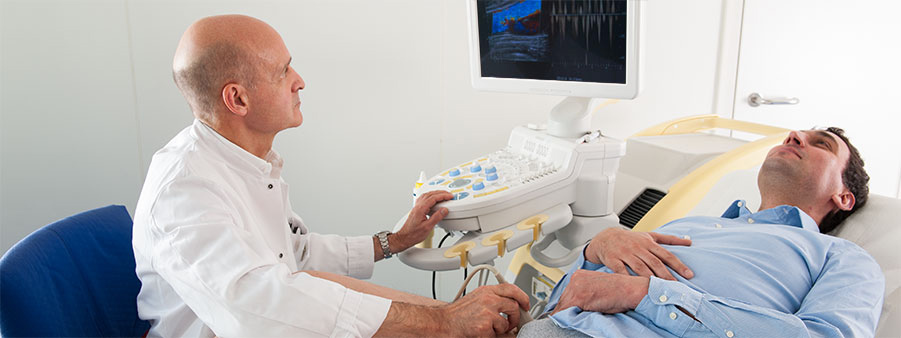CONSEQUENCES OF VARICOSE VEINS
Why should you have varicose veins treated?
The biggest opportunity to prevent the often-serious consequences of varicose veins, is early examination, alongside active preventative measures, followed by the quick initialisation of specialist treatment. A varicose vein illness should never be downplayed.
Superficial thrombophlebitis
The slow flow of blood in the varicose veins increases the risk of a blood clot. This blood clot can become inflamed in the varicose veins. This superficial thrombophlebitis has to be treated immediately by a specialist doctor, as otherwise it continues to expand, reaches the deep veins and can cause thrombosis there.
Deep vein thrombosis
Deep vein thrombosis (phlebothrombosis) prevents the flow of the blood in the veins of the leg. The blood gets stuck and causes the leg to swell. If the vein valves are irreparably damaged due to vein thrombosis, this results in a permanent swelling of the leg. The affected person then has to wear compression stockings for the rest of their life. Deep vein thrombosis is a life-threatening illness, as parts of the blood clot can reach the lungs and cause a pulmonary embolism.
Venous ulcers – Risk if left untreated
If a varicose vein disease is left untreated for over a year it causes the venous blood in the superficial veins to sag further. This used blood, full of waste, collects on the periphery of the lower leg. This damages the skin around the ankles so much that it swells. A venous ulcer occurs (ulcus cruris).

